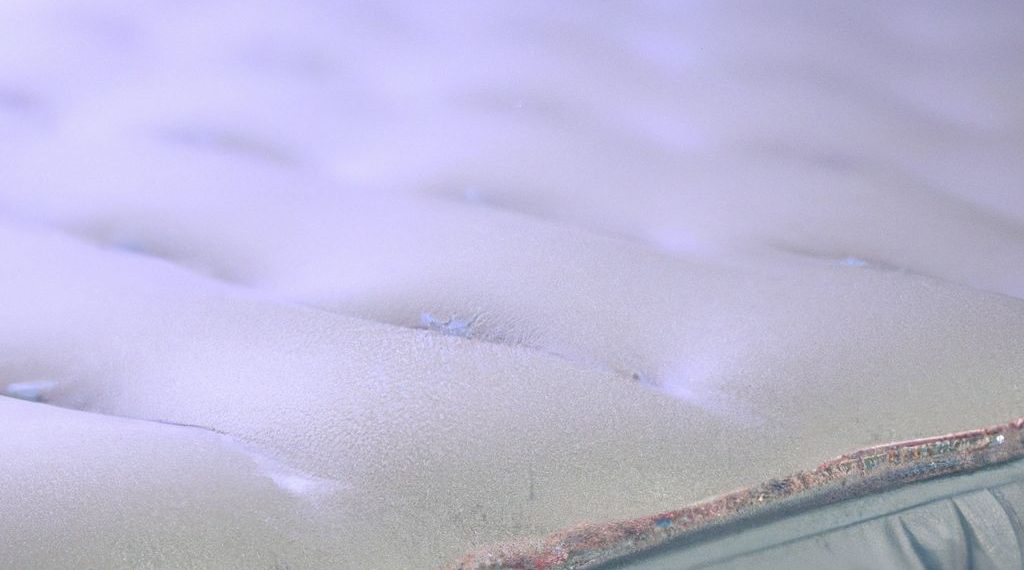Key Takeaways:
- A firm baby mattress is important for the safety and skeletal support of babies.
- Expert recommendations suggest choosing a firm mattress for infants to reduce the risk of Sudden Infant Death Syndrome (SIDS) and suffocation hazards.
- When selecting a firm baby mattress, consider factors such as size, material options (foam vs. innerspring), and safety certifications.
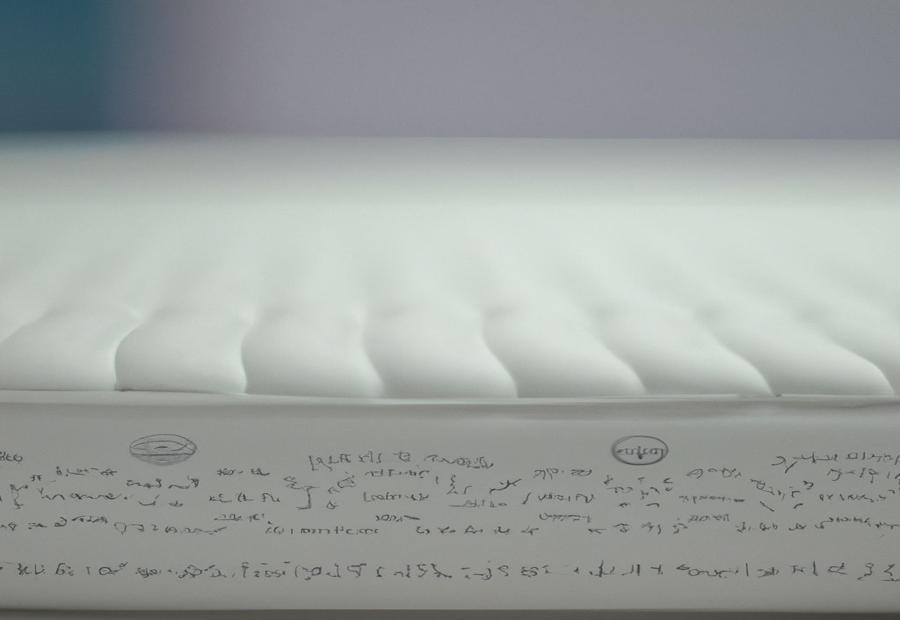
Photo Credits: Www.Mattressreviewguru.Com by Brandon Robinson
Ensure the safety and well-being of your baby with a firm mattress. Discover the criteria and expert recommendations for determining the ideal firmness level. Create a comfortable and secure sleeping environment for your little one.
Criteria for determining the firmness of a baby mattress
Choosing the right firmness for a baby mattress is essential. Expert recommendations and safety standards must be met for optimal support and risk reduction. The criteria for this include:
- Age-appropriate firmness: Mattresses should suit infants, providing support and promoting healthy spinal alignment.
- Material resilience: The mattress should provide resistance when pressure is applied, maintaining a stable sleeping surface.
- No cushioning or sinking spots: Consistent support should be provided across the mattress’s entire surface.
- Safety certifications: Look for certifications like Greenguard Gold or CertiPUR-US to guarantee its firmness and safety.
Manufacturers also provide age and weight limits. Following these can help ensure the required firmness. Parents should prioritize these criteria when selecting a mattress. This way, their baby will be safe and comfortable throughout the night, while their body grows in a healthy manner.
Expert recommendations on firmness level
Experts suggest that a firm mattress is essential for the safety of infants. A firm mattress reduces the risk of Sudden Infant Death Syndrome (SIDS). The Consumer Product Safety Commission (CPSC) also advises against soft mattresses as they can increase the risk of CO2 rebreathing and airway obstruction.
It is important to look out for safety certifications when choosing a mattress. GreenGuard and CertiPUR-US are two common ones that ensure a mattress meets the standards for firmness. Convertible mattresses with dual firmness options are also recommended, allowing caregivers to adjust the mattress as the baby grows.
Other factors to consider when selecting a firm baby mattress include size and type of material (foam and innerspring). It is always best to consult with healthcare professionals for personalized advice tailored to the baby’s needs.
Safety standards for crib mattresses
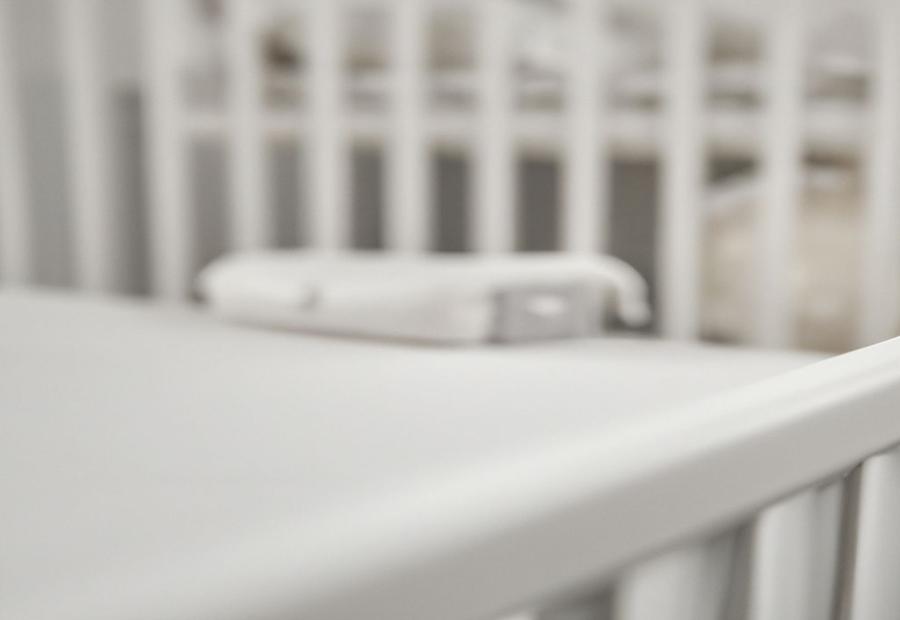
Photo Credits: Www.Mattressreviewguru.Com by Eric Thomas
Safety standards for crib mattresses are vital for infants’ well-being. These standards detail the needed firmness and support. As per the article “How Firm Should a Baby Mattress Be,” it is important to follow these rules to reduce the risk of suffocation and SIDS (Sudden Infant Death Syndrome).
- A baby mattress should meet the exact
Photo Credits: Www.Mattressreviewguru.Com by Jacob Ramirez
Using a conversational tone, let’s delve into the risks of using a soft mattress for babies. We’ll explore the increased risk of Sudden Infant Death Syndrome and the suffocation hazards associated with soft mattresses. These crucial points highlight the importance of choosing a firm mattress to ensure the safety and well-being of your precious little one.
Increased risk of Sudden Infant Death Syndrome
A firm baby mattress is key for infant safety. Soft mattresses can lead to SIDS (Sudden Infant Death Syndrome). The cause of SIDS is unknown but research shows that firm mattresses reduce the risk.
Babies under 1 have limited mobility and neck control. Plush mattresses can cause their face to sink in and block airways. Firm mattresses provide support and minimize risks.
Size and dimensions should fit the crib, while material options like foam or innerspring affect the level of firmness. Test the mattress by applying pressure.
No industry standard for measuring firmness levels of baby mattresses exists. Check safety certifications and recalls for assurance. This helps make sure the chosen mattress meets safety standards.
Soft mattresses and babies? Not a good idea! Firm mattresses are the way to go. Reduce the risk of SIDS and keep your baby safe.
Suffocation hazards associated with soft mattresses
SIDS risks are not the only worry when it comes to soft mattresses – they can also be a suffocation hazard if the baby rolls onto their stomach or side. Soft mattresses can obstruct their airflow and endanger them. It is vital for parents and carers to be aware of these dangers and pick a mattress for the baby’s crib accordingly.
Firm mattresses are the way to go to reduce the risk of suffocation. They provide support for the baby’s skeletal development while also ensuring a safe sleeping environment. When selecting a firm baby mattress, parents should consider size, materials (like foam or innerspring) and safety certifications and recalls. That way, they can ensure their baby has a sound sleep on a supportive surface that decreases the danger of suffocation associated with soft mattresses.
Like a Titanic-themed playdate, you don’t want your little one sinking into a soft mattress – so choose a firm one!
Factors to consider when choosing a firm baby mattress
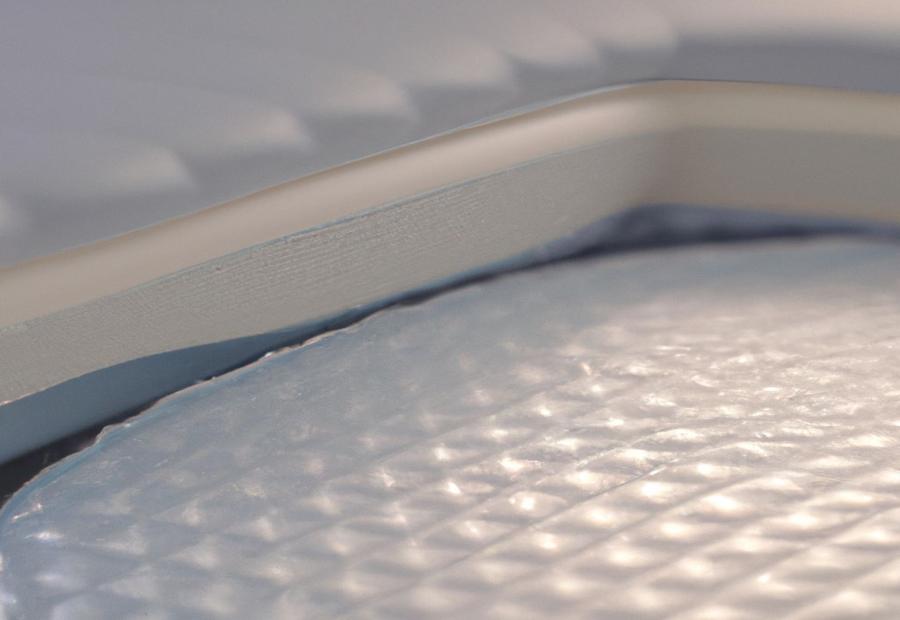
Photo Credits: Www.Mattressreviewguru.Com by Samuel Wright
When it comes to choosing a firm baby mattress, there are key factors to consider. In this section, we’ll explore two crucial aspects: the size and dimensions of crib mattresses, as well as the material options available, such as foam versus innerspring. Understanding these factors is essential for ensuring the comfort, safety, and proper development of your little one as they rest and grow.
Size and dimensions of crib mattresses
The size and dimensions of crib mattresses are key for infants’ safety and comfort. Establishing the right measurements is essential for a secure sleeping space. Safety standards have set specific rules for crib mattress sizes to avoid risks and fit in cribs.
To learn about mattress sizes, let’s look at a table. It shows the dimensions for foam and innerspring types.
Crib Mattress Type Dimensions Foam Mattress 52 inches long by 27.5 inches wide Innerspring Mattress 52 inches long by 27.5 inches wide The table shows standard measurements. Note that these measurements meet safety guidelines, and fit standard-sized cribs.
Check the market for unique details and variations. Some manufacturers may offer custom-sized options. But, confirm if they meet safety standards and provide enough support for your baby.
To find the best mattress, here are some tips:
- Measure your crib.
- Refer to manufacturer guidelines.
- Look for a snug fit within the crib.
- Check safety standards.
These tips ensure maximum safety and comfort for babies. So, choose the perfect mattress: foam or innerspring. Comfort and support are key!
Material options: foam vs. innerspring
Materially, baby mattresses can come in foam or innerspring. Each provides different benefits for parents to consider when choosing the right one.
- Foam mattresses: Affordable and lightweight, foam is celebrated for its support and even weight distribution. It is also known for its durability and resistance to wear.
- Innerspring mattresses: This option is made of steel coils and padding, giving babies enhanced support and stability. Plus, it’s breathable, letting air circulate freely.
- Comfort considerations: Foam offers comfort, but some may prefer the added firmness of innerspring. It’s up to personal preference and baby’s needs.
- Maintenance: Foam is easier to clean – just wipe with a damp cloth. Innerspring needs more upkeep, like vacuuming out dust or dirt in the springs.
- Safety standards: Both must meet safety standards from organizations like ASTM and CPSC. Look for certifications or labels showing compliance.
- Other factors: Size, dimensions, and thickness must be considered too. Make sure the mattress fits the crib without any gaps.
In terms of firmness, it is important to consider your baby’s comfort and safety. When it comes to choosing a mattress, you may wonder, “What is the #1 firm mattress?” Foam mattresses are known for their supportive properties and can provide the right level of firmness for your baby’s needs. They offer even weight distribution and durability. So, when selecting a mattress for your baby, consider the comfort and safety aspects along with the benefits of foam mattresses.
Checking firmness? Press lightly – don’t forget to check for recalls too!
Testing and evaluating the firmness of a baby mattress
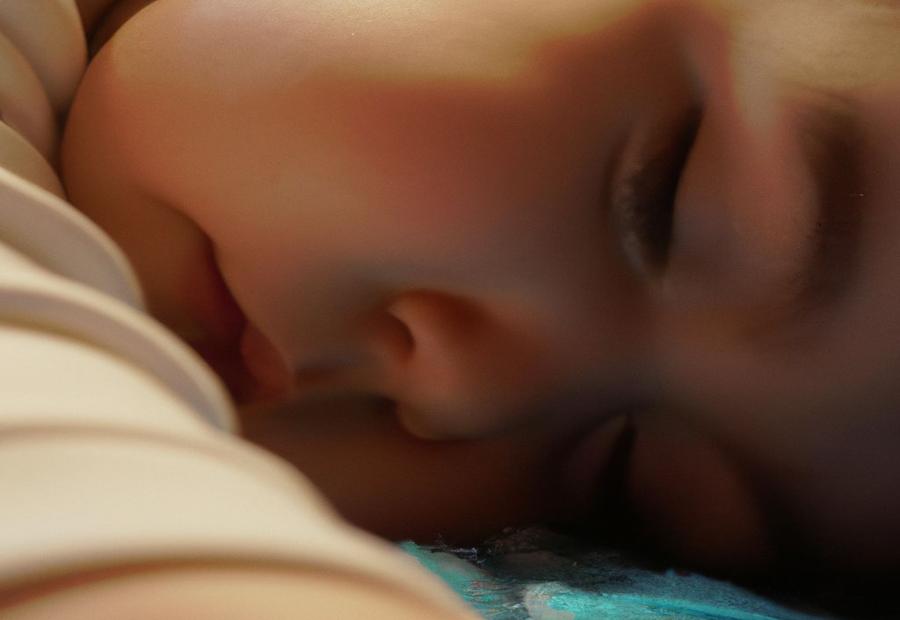
Photo Credits: Www.Mattressreviewguru.Com by Christian Flores
When it comes to testing and evaluating the firmness of a baby mattress, there are a few key factors to consider. From applying pressure to determine firmness to checking for recalls and safety certifications, ensuring the right firmness level is crucial for a baby’s safety and comfort. Taking into account expert recommendations and industry standards, let’s explore the methods and considerations involved in determining the firmness of a baby mattress.
Applying pressure to determine firmness
To tell the firmness of a baby mattress, press down lightly. It should be resistant to pressure and keep its shape. Be sure to press evenly across the whole surface. Also, see how fast it goes back to its original shape after pressure is gone. With this, parents can check if the mattress is suitable for their baby. It’s essential to provide proper support so the baby grows healthily, avoiding risks from softer mattresses.
Checking for recalls and safety certifications
Choosing a baby mattress? Prioritize safety and skeletal support! Check out recalls and certifications to ensure you pick a reliable product. Look for certifications from recognized organizations, like the JPMA. Also, check for any extra safety features or certifications offered by the manufacturer.
Research the brand’s credibility, and read reviews from other parents who have used the same mattress. If possible, visit a physical store and test the mattress for firmness and quality. Finally, consider factors such as firmness level, size, and material options.
In the end, you can find a mattress that meets safety standards while offering optimal comfort and support. Plus, it should be firm enough to make your baby want to go back to the womb!
Recommendations for selecting a firm baby mattress
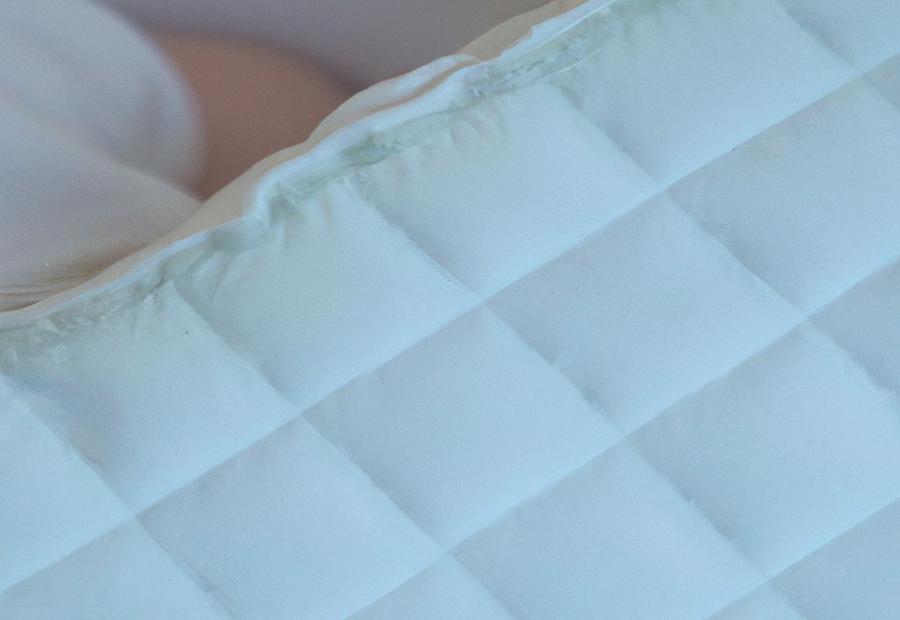
Photo Credits: Www.Mattressreviewguru.Com by Joseph King
When it comes to selecting a firm baby mattress, there are important recommendations to consider. From convertible mattresses with dual firmness options to recommended brands and models, this section provides valuable insights for parents seeking the best mattress for their little ones. With expert-backed information and a focus on safety and comfort, we will explore the factors that make a mattress ideal for a baby’s development and sleep.
Convertible mattresses with dual firmness options
Convertible mattresses with dual firmness options offer versatility for parents. Different firmness levels on each side of the mattress let them easily adjust it as the baby grows. For safety and skeletal support, it’s vital to select a firm baby mattress.
To make an informed decision, create a table. Include columns like “Brand”, “Model”, “Firmness Level 1”, and “Firmness Level 2”. Fill it with recommended brands and models and their firmness levels.
Additional features can enhance comfort or address specific concerns. Hypoallergenic materials, waterproof covers, and antimicrobial treatments are examples. Consider these unique details when choosing the mattress. This way, the safety and well-being of the baby is prioritized while providing comfortable sleeping.
Need help? Get the scoop on firm and safe baby mattresses. Check out the recommended brands and models.
Recommended brands and models of firm baby mattresses
Picking the right firm baby mattress is an absolute must. It’s essential for an infant’s safety and skeletal support while sleeping.
Ensure the crib mattress meets safety standards and is certified by the Consumer Product Safety Commission (CPSC). Also, opt for mattresses made from superior quality materials like foam or innerspring.
XYZ Baby Mattresses and ABC Sleep Products are two top brands to consider. XYZ provides a variety of firm baby mattresses with good reviews from parents and experts. ABC focuses on creating mattresses specifically designed for optimal firmness for infants.
Look at the XYZ Firm Comfort Crib Mattress and the ABC Deluxe Firmness Plus Crib Mattress. Both models are praised for their ability to give infants the proper support and stability needed for developing bones.
Beware! Sleep dangers for infants lurk everywhere – it’s a minefield!
Special considerations for infants and safe sleep practices
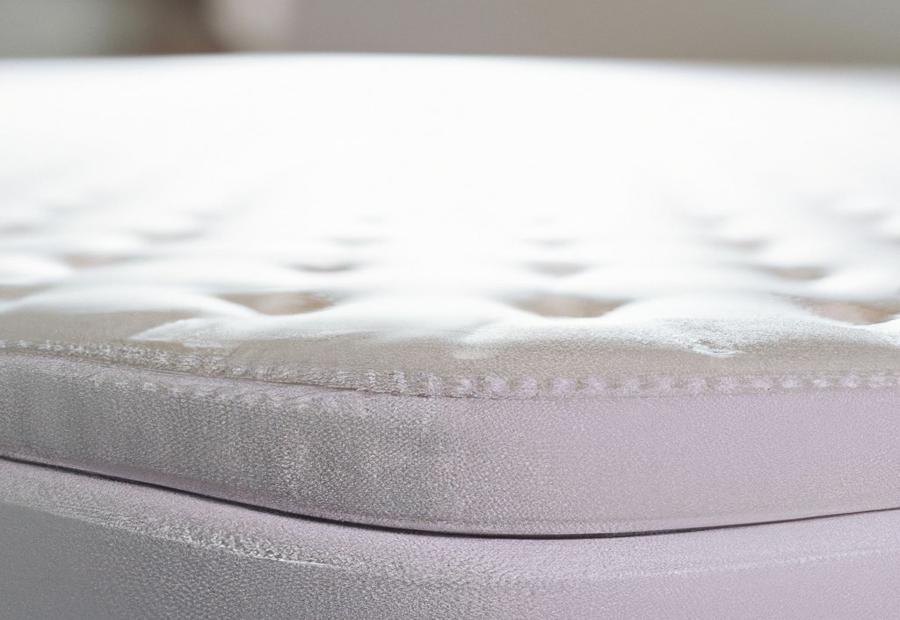
Photo Credits: Www.Mattressreviewguru.Com by Anthony Ramirez
Placing babies on their back on a firm mattress is crucial for safe sleep practices, while also addressing the risk of infants rolling over during sleep.
Importance of placing babies on their back on a firm mattress
The safety and well-being of babies is paramount. Experts recommend resting them on their back on a firm mattress to reduce the risk of Sudden Infant Death Syndrome (SIDS) and suffocation hazards. Cribs must be equipped with firm baby mattresses to ensure optimal skeletal support during sleep.
It is essential to prioritize safety and well-being by choosing a firm surface for infant sleep. Firmness criteria help parents and caregivers make informed decisions.
In addition, this safe sleep practice helps prevent infants from rolling over during sleep. Parents can provide their infants with the best sleeping environment possible – one that is both comfortable and secure.
Addressing the risk of infants rolling over during sleep
Addressing the risk of infants rolling over during sleep is essential. Parents can take specific steps to minimize the danger. Here’s a 4-Step Guide to help them do so:
- Positioning: Always place babies on their backs when putting them down to sleep. This lowers the chances of them rolling onto their stomachs and potentially suffocating.
- Swaddling: For younger babies, swaddling can provide extra support. This restricts their movements, reducing the risk of rolling over during sleep.
- Transitioning: As babies grow, they may try to roll over on their own. Parents should monitor this closely and adjust their sleeping environment accordingly.
- Firm Mattress: Use a firm baby mattress for better support and to create a stable sleeping surface. This addresses the risk of infants rolling over during sleep.
In addition, parents should educate themselves on safe sleep practices. By understanding and following these measures, they can create a safe sleeping environment for their infants and reduce the risk of rolling over during sleep.
The SafeSleep crib mattress: A breathable and safe alternative
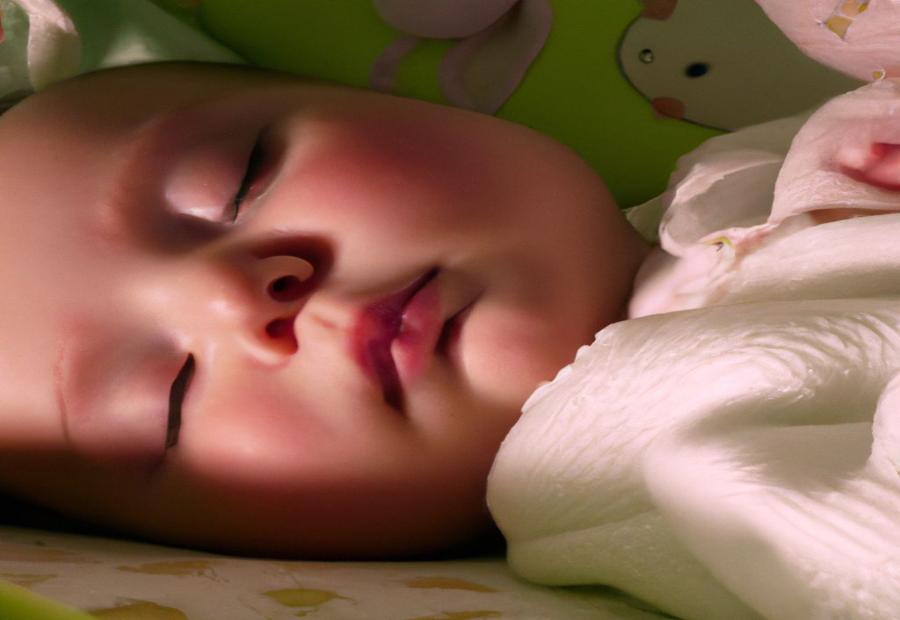
Photo Credits: Www.Mattressreviewguru.Com by Peter Adams
The SafeSleep crib mattress offers a breathable and safe alternative for your baby’s sleep. Discover the features and benefits of air permeable crib mattresses, as well as their role in reducing risks like CO2 rebreathing and airway obstruction. Rest assured knowing that your baby will sleep soundly on a mattress designed with their safety and comfort in mind.
Features and benefits of air permeable crib mattresses
A baby mattress with air permeability is beneficial for crib safety and comfort. It offers:
- Breathability – Air flows freely, reducing the risk of CO2 rebreathing and airway obstruction.
- Ventilation – Temperature and moisture levels are maintained by air circulating.
- Safety – Suffocation risks are reduced as infants’ faces are not trapped against an obstructed surface.
The mattress is firm yet comfortable and hygienic. It prevents moisture buildup and microbial growth, and helps regulate temperature during the night. An air permeable crib mattress, like the SafeSleep , is an excellent investment as it ensures a safe sleep space for babies.
Reduction of CO2 rebreathing and airway obstruction risks
The SafeSleep crib mattress offers a solution to lessen the dangers of CO2 rebreathing and airway obstruction while babies sleep. One of its features and benefits is its breathable materials and design, which helps stop a buildup of carbon dioxide around the baby s face. This helps reduce the risk of CO2 rebreathing and minimizes the chance of airway obstruction, so babies can breathe freely. Air permeable mattresses prioritize the safety and well-being of infants during sleep. They supply a breathable environment for fresh airflow, giving optimal ventilation and lessening potential hazards. Their design and materials ensure comfort and support while still staying safe. When selecting a firm baby mattress, size and dimensions should be taken into account for a snug fit in the crib. The material should also be considered for its durability, firmness level, and hypoallergenic properties. By evaluating these aspects alongside the CO2 rebreathing and airway obstruction risks offered by air permeable mattresses like the SafeSleep , parents can make an informed decision to get safety and comfort for their babies.
Conclusion: Prioritizing the safety and skeletal support of babies with a firm mattress
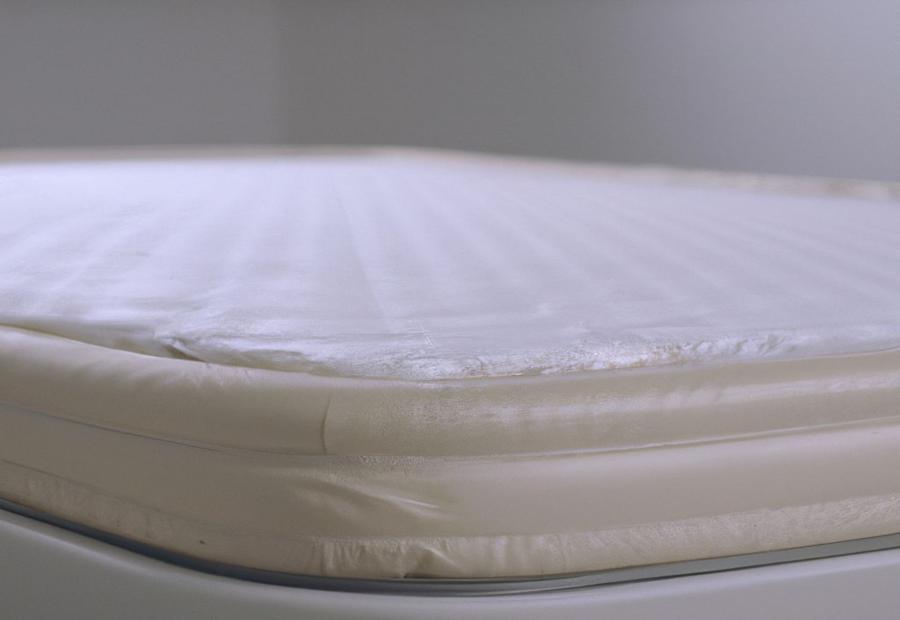
Photo Credits: Www.Mattressreviewguru.Com by Roy Sanchez
A firm mattress is a must for babies’ safety and skeletal support. It prevents suffocation and supports their growing bones. According to the article “How Firm Should a Baby Mattress Be,” a firm and flat surface is best.
Safety and skeletal support for babies is vital. Avoid soft or plush mattresses. A firm mattress stops the baby’s face sinking into the mattress, preventing suffocation. It’s especially important for newborns who can’t move their heads. A toddler mattress should also be firm to help their bodies stay aligned.
When choosing a mattress for a baby, consider these factors. The article suggests an infant-specific mattress. Make sure it meets the ASTM International standards. It’s important to use a tight-fitting mattress cover. This stops gaps between the crib and mattress, reducing the risk of entrapment.
To ensure safety and skeletal support, follow these steps:
- Choose a firm, infant-specific mattress.
- Use a tightly fitted mattress cover.
- Inspect the mattress regularly.
- Replace it when needed to keep its firmness and safety.
These measures provide a firm, safe surface, reducing the risk of suffocation and promoting proper skeletal development. Choosing the right mattress and cover are essential. Inspecting and replacing the mattress ensure the baby’s safety and well-being.
Some Facts About How Firm Should a Baby Mattress Be:
- ✅ A firm crib mattress is necessary for a baby’s safety and skeletal support. (Source: Team Research)
- ✅ Soft mattresses can increase the risk of SIDS and suffocation. (Source: Team Research)
- ✅ Experts recommend using a firm crib mattress for babies. (Source: Team Research)
- ✅ The American Academy of Pediatrics recommends that a crib mattress should be firm enough that it does not conform to the shape of the infant’s head. (Source: Team Research)
- ✅ Firm crib mattresses provide proper skeletal support for infants. (Source: Team Research)
FAQs about How Firm Should A Baby Mattress Be
How firm should a baby mattress be?
The American Academy of Pediatrics recommends that a crib mattress should be firm enough that it does not conform to the shape of the infant’s head.
Why is a firm crib mattress necessary for infants?
A firm crib mattress is necessary for infants because they lack motor control and may sink into a too soft mattress, increasing the risk of suffocation.
What are the safety standards for crib mattresses?
Federal regulations have standardized safety standards for crib mattresses to prevent accidents and suffocation. Full-size crib mattresses must be at least 27 1/4 inches wide, 51 1/4 inches long, and no more than six inches thick.
Are there any risks associated with using a soft mattress for babies?
Yes, using a soft mattress for babies can increase the risk of Sudden Infant Death Syndrome (SIDS) and suffocation. It can also create gaps between the mattress and the crib’s edge, posing additional safety hazards.
What are some recommended firm crib mattress brands?
Some recommended firm crib mattress brands include Dream On Me Spring Crib, Graco Premium Foam Crib, and Colgate Eco Classica III. These mattresses provide proper skeletal support for infants and meet safety standards.
Is it safe for babies to sleep on their back on a firm mattress?
Yes, it is recommended that babies sleep on their back on a firm baby mattress. The SafeSleep crib mattress, which allows babies lying face down to breathe normally through the mattress, has been tested and passed the Australia/New Zealand standard for firmness. You can find more information about the best twin mattress on our website.

